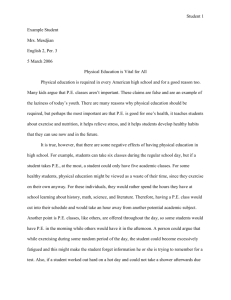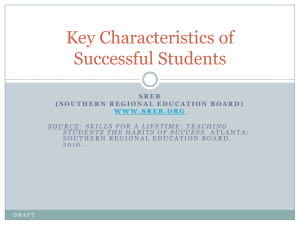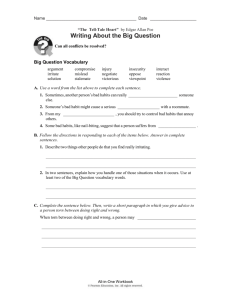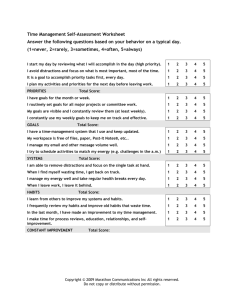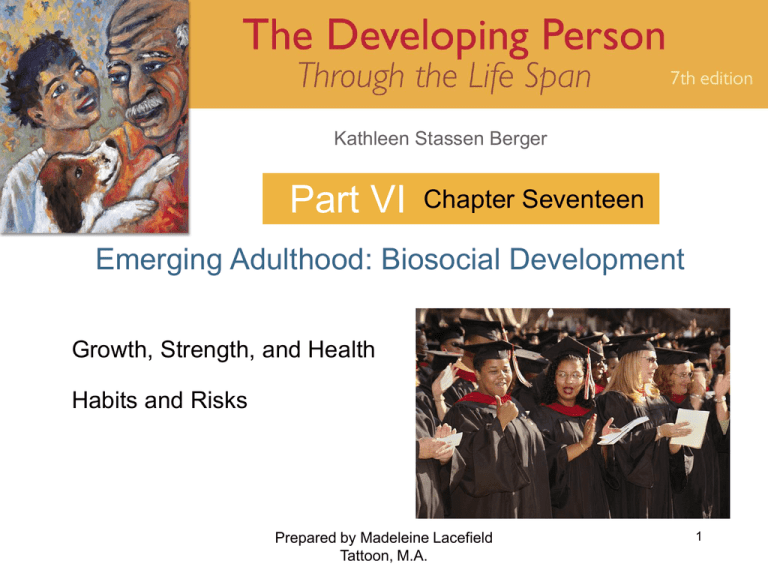
Kathleen Stassen Berger
Part VI
Chapter Seventeen
Emerging Adulthood: Biosocial Development
Growth, Strength, and Health
Habits and Risks
Prepared by Madeleine Lacefield
Tattoon, M.A.
1
Emerging Adulthood: Biosocial Development
“Over the past few decades, a social shift has
pushed forward the age at which people are
expected to commit to career and family, or at
least to have “a good plan.”
2
Growth, Strength, and Health
• Ages and Stages
– for children, physical maturation
correlates with chronological age and
developmental stage
– the play years and the school years also
have biological markers
– in adulthood chronological age is an
imperfect guide to development
3
Growth, Strength, and Health
• Ages and Stages
– social roles vary
• a group of 40-year-olds might include those
married, divorced, expecting children or who are
grandparents
– developmentalists, however, still cluster adults
into chronological groups and report differences
– age is not definitive within one community,
cohort, or culture
4
Growth, Strength, and Health
• Ages and Stages
– Pew Research Center (2007) compares
generations…
• “boundaries that separate generations are
indistinct” but proceed to distinguish the
following…
5
Growth, Strength, and Health
Pew Research Center
18 to 25
Generation Next 1981-1988
25 to 40
Generation X
1966-1980
40 to 60
Baby boomers
1946 -1964
60 and older Seniors
before 1946
6
Growth, Strength, and Health
7
Growth, Strength, and Health
• Strong and Attractive Bodies
– muscles grow and shape changes in
ways that differ by sex
• males gain more arm muscle and
females more hip fat
– physical strength for both sexes
increases in the 20s
8
Growth, Strength, and Health
• Strong and Attractive Bodies
– the body system (digestive, respiratory,
circulatory, and sexual-reproductive
system), functions optimally at the
beginning of adulthood
– serious diseases are not yet apparent,
some childhood ailments are outgrown
9
Growth, Strength, and Health
• Bodies Designed for Health
– senescence
• the process of aging, whereby the body
becomes less strong and efficient
10
Growth, Strength, and Health
• Bodies in Balance
– homeostasis
• the adjustment of the body’s systems to keep
physiological functions in a state of equilibrium
• as the body ages, it takes longer for these
homeostatic adjustments to occur, so it
becomes harder for older bodies to adapt to
stress
– organ reserve
• the capacity of young adults’ organs to allow the
body to cope with stress
11
Growth, Strength, and Health
• Appearance
– most emerging adults look vital and
attractive because of overall health,
strength, and activity
– oily hair, pimpled faces, and awkward
limbs of adolescence are gone
– wrinkles and hair loss of adulthood have
not yet appeared
12
Growth, Strength, and Health
• Appearance
– muscles are stronger and obesity is less
common in emerging adulthood than
earlier or later in life
– young adults worry about how they look
because they want attention from each
other
13
Growth, Strength, and Health
• Sexual Activity
– the sexual-reproductive system is at its
strongest during emerging adulthood
– adults have a strong sex drive
– fertility is greater and miscarriage is less
common
– orgasm is more frequent
– testosterone, is higher for both men and
women
14
Growth, Strength, and Health
• Sexual Activity
– sex drives lead to many joyous interactions
– many young adults want sex but do not want
spouses or children
– more methods today for women to not become
pregnant
– the reality that sex need not entail pregnancy
is one reason that people are marrying later
15
Growth, Strength, and Health
• Sexual Activity
– most emerging adults still believe that
marriage is a serious and desirable
commitment
– premarital sex postpones marriage
without sexual deprivation
– this new pattern makes for two
complications: distress and disease
16
Growth, Strength, and Health
• Emotional Stress
– emerging adults have more partners and more
sexual intercourse than adults who are
somewhat older
– “unanticipated emotional entanglement” is
likely to produce emotional stress
– most sexual interactions include unspoken
assumptions
• reproduction
• relationship
• recreation
17
Growth, Strength, and Health
• Sexually Transmitted Infections (STIs)
– have been around since the beginning of
time
– much higher today than ever before
– half of all adults have had at least one
STI
• some minor; others leading to potentially
serious health problems
18
Growth, Strength, and Health
• Sexually Transmitted Infections (STIs)
– STIs can have no symptoms (about half
the time)
– infertility and even death can occur
– public health experts recommend checkups every six months after the end of a
sexual relationships and before starting
sex with a new partner
19
Habits and Risks
• Some emerging adults begin good
habits and sustain them lifelong;
others make destructive choices.
20
Habits and Risks
• Exercise
– protects against serious illness at every
stage of life
– reduces blood pressure
– strengthens the heart and lungs
– makes depression, osteoporosis, heart
disease, arthritis, and even some cancer
less likely
21
Habits and Risks
• Exercise
– sitting for long hours correlates with
almost every unhealthy condition
– even a little movement—gardening, light
housework, walking up stairs—helps
– it is natural for emerging adults to keep
moving
22
Habits and Risks
• Exercise
– past generations quit exercising when
marriage, parenthood, and career
became demanding
– young adults can choose friends and
communities that support, rather than
preclude, staying active
23
Habits and Risks
• Eating Well
– set point
• a particular body weight that an
individual’s homeostatic processes strive
to maintain
– Body Mass Index (BMI)
• the ratio of a person’s weight in
kilograms divided by his or her height in
meter’s squared
24
Habits and Risks
• Eating Disorders
– anorexia nervosa
• a serious eating disorder in which a
person restricts eating to the point of
emaciation and possible starvation
• most victims are high-achieving females
in early puberty or early adulthood
25
Habits and Risks
• Eating Disorders
– According to DSM-IV (American Psychiatric
Association, 2000 )
• anorexia nervosa is diagnosed when four
symptoms are evident:
– refusal to maintain a body weight that is at least 85%
of normal for age and height
– intense fear of weight gain
– disturbed body perception and denial of the problem
– in adolescent and adults females, lack of menstruation
26
Habits and Risks
• Eating Disorders
– bulimia nervosa
• an eating disorder in which the person,
usually female, engages repeatedly in
episodes of binge eating followed by
purging through induced vomiting or use
of laxatives
27
Habits and Risks
• Theories of Eating Disorders
– in all eating disorders, consumption is
disconnected from the internal cues of hunger
– a developmental perspective finds that eating
disorders may originate early in life
• not only with genes but also with early hunger
and family food habits
28
Habits and Risks
• Theories of Eating Disorders
– women are 10 times more likely to engage in
destructive self-sabotage
– is it nature or nurture?
– remember the theories in Chapter 2
•
•
•
•
•
psychoanalytic
behaviorism
cognitive
socialcultural
epigenetic
29
Habits and Risks
• Taking Risks
– emerging adults bravely, or foolishly, take risk
– risk taking is not age-related, it is also genetic
and hormonal
– some people are naturally more daring than
others
– males are more likely to be brave or foolish
– society benefits because each generation of
emerging adults takes chances
30
Habits and Risks
• Edgework
– occupations or recreational activities
that require a degree of risk or danger; it
is this prospect of “living on the edge”
that makes edgework compelling to
some individuals
31
Habits and Risks
• Drug abuse…
– and addiction can involve a wide range of
drugs, from the perfectly legal to the highly
illegal…
– two of the most harmful and addictive
substances—nicotine and alcohol—are legal
in the United States
– from a health perspective, legality is
irrelevant…what matter is the effects of abuse
and addiction
32
Habits and Risks
• drug abuse
– the ingestion of a drug to the extent that it impairs
the user’s biological or psychological well-being
• drug addiction
– a condition of drug dependence in which the
absence of the given drug in the individual's
system produces a drive—physiological,
psychological, or both—to ingest more of the drug
• delay discounting
– the tendency to under-value, or downright ignore,
future consequences and rewards in favor of more
immediate gratification
33
Habits and Risks
34
Habits and Risks
• Social Norms
– the standards of behavior within a given
society or culture
– social norms approach
• a method of reducing risky behavior that uses
emerging adults’ desire to follow social norms
by making them aware, through the use of
surveys, of the prevalence of various behaviors
within their peer groups
35

